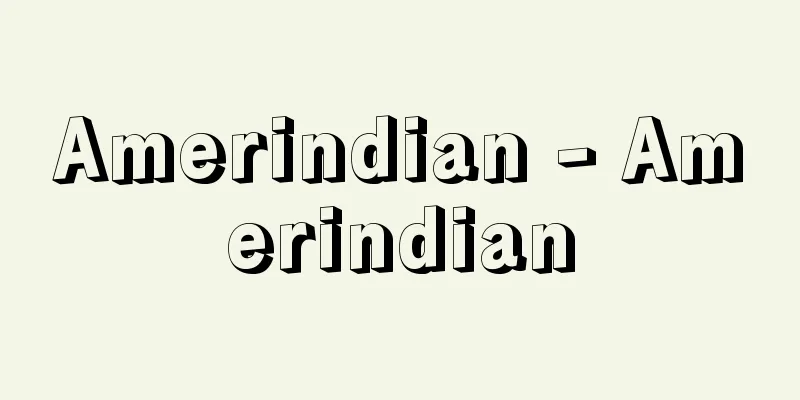Sweater - Se-taa (English spelling) sweater

|
It is a knitted garment worn on the upper body, either hand-knitted or machine-knitted. There are various types, with or without sleeves, and the length of the body. There are pullover types worn over the head, coat types including cardigan types that open in the front, back-opening types, and wrap-around types. The material was generally wool, but there are various other materials such as cotton, linen, and silk, as well as synthetic yarns that have been rapidly developed, glitter yarn, and beaded knitting, and it is expected that the number of materials will increase in the future. In Japan, pullover types are usually called sweaters. The etymology comes from sweat, which makes you sweat. It is said that it became popular because the football teams of the Ivy League (a group of prestigious universities in the Northeast) in the late 19th century wore knitted uniforms that absorbed sweat easily, but it is also said that the name came from thick pullover sports shirts that were worn to let out sweat. It was later used as a cold weather garment, and is now popular as a summer sweater. Hand knitting has a long history dating back to the Middle Ages, but machine knitting was first made when the Englishman William Lee (?-1610) invented a sock knitting machine in 1589. Recently, machine knitting has developed and the knitting methods and materials have become more complex and of higher quality, but due to mass production, hand knitting tends to be seen as more luxurious. Types include cardigans, dolmans, turtlenecks, etc. based on style; ski, crew, school, tennis, etc. based on uses; and place names derived from the place of origin, pattern, or material, such as Arran Isle (V-neck pullover style), Argyle (diamond pattern, Argyle region of Scotland), and Fisherman (bulky hand-knitted in off-white). [Nobuko Uragami] Source: Shogakukan Encyclopedia Nipponica About Encyclopedia Nipponica Information | Legend |
|
上半身に着る編物の衣服で、手編みも機械編みもある。袖(そで)の有無や長短、身頃(みごろ)の長短はさまざまであり、形式は頭からかぶって着るプルオーバー型、前あきのカーディガン型を含むコート型、後ろあき型、巻き付け型などがある。素材は毛糸が一般的であったが、木綿、麻、絹などのほか、発達の目覚ましい合繊糸、ラメ糸、ビーズの編み込みなど多様で、今後ますます豊富になると予想される。日本では普通プルオーバー型のものをセーターとよぶ。語源は、汗をかくsweatにある。19世紀後半アメリカのアイビー・リーグ(北東部の名門大学グループ)のフットボールチームが、汗を吸収しやすい編物のユニフォームを着たことから一般化したといわれるが、厚手のスポーツシャツでプルオーバー型のものが、汗を出す目的で着られ、スウェットシャツとよばれたためともいわれる。のちに防寒着として利用され、いまはサマーセーターとしても普及している。手編みの歴史は中世以来長いが、機械編みは1589年イギリス人リーWilliam Lee(?―1610)が靴下編機を発明したのが最初である。最近は機械編みが発達し、編み方も素材も複雑で上質になったが、大量生産のため逆に手編みが高級視される傾向にある。 種類は、形態からカーディガン、ドルマン、タートルネックなど、用途からスキー、クルー、スクール、テニスなど、原産地や柄(がら)や素材に由来した地名などからアランアイル(Vネックでプルオーバー型)、アーガイル(ダイヤモンド柄で、スコットランドのアーガイル地方)、フィッシャーマン(生成(きなり)の色でバルキーな手編み)などがある。 [浦上信子] 出典 小学館 日本大百科全書(ニッポニカ)日本大百科全書(ニッポニカ)について 情報 | 凡例 |
<<: Household - Setai (English spelling) household
Recommend
Kin no Sai
Title. A type of actor review. Written and illustr...
Bunsei Reform - Bunseikaikaku
Reforms were implemented in the Kanto region from ...
Mortar - Mortar (English spelling)
A building material. A mixture of cement, sand, a...
Kakuto Basin
A basin located in the southwest of Miyazaki Pref...
Ludwigshafen am Rhein
A city in the state of Rhineland-Palatinate in so...
Utricularia - Utricularia
A perennial plant of the Utricularia family (APG ...
Hildebrand's Song - Hildebrandslied
A fragmentary heroic song of unknown authorship w...
Dry cloth friction - Kampumasatsu
This is a folk remedy that aims to build up resis...
Calligraphy - Shoron
〘Noun〙① A discussion written in a book. ※Joruri: S...
Kubunden - Kubunden
This was the central land category in the Ritsury...
Zijl, L. (English spelling) ZijlL
...The 19th century was marked by a long period o...
Hydroforming
...To prevent this, the reaction is carried out b...
Sitwell, O.
…As a prominent figure in British literary and so...
Crocidura dsinezumi (ground mouse)
A small mammal of the family Sorecoidae in the ord...
Crime of boundary damage
...Because land and buildings cannot be moved, th...









